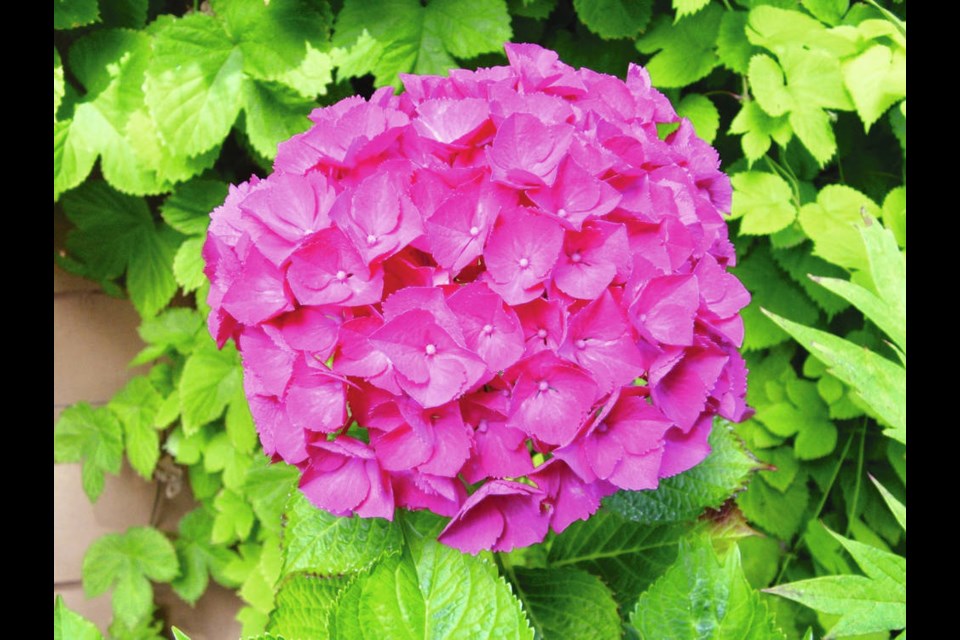Dear Helen: When and how should I prune my hydrangea shrubs?
C.L.
That depends on the kind of hydrangea. Probably the most commonly grown here is bigleaf hydrangea (Hydrangea macrophylla). These shrubs bear either rounded “mophead” or more flattened “lacecap” flower clusters, on wood produced in the previous season. My preferred time to prune bigleaf hydrangeas is during the latter part of February or in early March. I begin by eliminating any dead or very weak, spindly shoots. In plants crowded with many shoots arising from the ground, it is a good idea to cut away one or two of a shrub’s oldest stems each year.
Prune each of the previous year’s flowered stems back to the fattest pair of buds on the newest growth. That’s the growth made in the previous year. It is noticeably greener and softer than older growth, which is a pale tan and woodier.
On plants that did not bloom in the previous year, follow the same general plan, thinning as needed and otherwise shortening canes by cutting only into the newest growth. Cut back stems grown overlong enough to detract from the shrub’s shapeliness.
Two hardier hydrangeas, both grown in cold winter areas down to zone 3, are H. paniculata (peegee or panicle hydrangea) and H. arborescens (hills-of-snow, Annabelle hydrangea). Both flower on new wood, that is on stems produced in the current year. They are pruned in late winter to early spring.
Cut Annabelle type hydrangeas back by one-third to one-half for a tidy bush.
Depending on the type of H. paniculata (some are naturally dwarf), you can leave them unpruned or, for extra large flowers, prune severely. A lighter pruning will yield more, smaller flowers.
Dear Helen: Our Mission fig tree typically bears a small (12 to 15 figs) first batch of figs, and a much larger second crop that never ripens as the weather cools in late September and October. What can be done to induce ripening in the second crop? Also, should I remove the unripened figs or just let them fall off the tree?
S.M.
In all but the warmest, most protected areas and individual sites, the second crop will not ripen. The aim is to prune for a good first crop, in August.
The first crop is borne on (year-old) branches produced in the previous year. To keep production ongoing, prune in early March to remove the older branches, ones that bore fruit in the previous summer. When you prune them out, leave a slight (2.5-cm) stub, which will produce replacement shoots to bear a crop in the following year. As they develop, thin out the new shoots to eliminate congestion and to allow free air circulation and sunlight penetration to all parts of the tree.
At pruning time, leave the one-year old growth alone, except for any further necessary thinning. Fruit will develop, and ripen, along the ends of these branches.
After the August harvest, as new figs form, I leave them to drop off on their own. They are eventually raked up, along with the fallen leaves, for composting.
Fruit Trees and More, a family-run nursery on Wain Road in North Saanich, has a website (fruittreesandmore.com) with a video demonstrating fig tree pruning.
Dear Helen: I’d appreciate the names of some plants that have winter berries to feed the birds. I watch with pleasure as birds feed on firethorn and mountain ash berries.
F.M.
Many of our native plants serve this purpose. The red huckleberry (Vaccinium parvifolium) shrubs in my garden carry lovely little coral red berries that draw and feed birds. Evergreen huckleberry, Oregon grape, salal, snowberry and arbutus are more.
Leaving faded flowers and other plants to set seed is an easy way to provide winter nourishment for birds. Looking out my office window into the front garden in winter provides many amusing moments as I watch birds lighting on sunflower heads and riding the tall stems downward as they pick out seeds. Some grasses also yield seeds for birds.
Leaving at least parts of the garden a bit messy and not cleaning out spent annuals or tidying up perennial flowers can yield both food and cover for birds.



